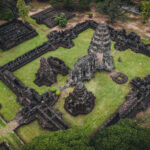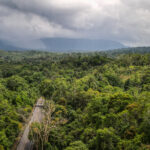Nakhon Ratchasima, or “Khorat” as it is more commonly called, is the largest city in the Isaan province of northeastern Thailand. Located close to the famous ancient Khmer ruins of Phimai, and with a booming city center, Nakhon Ratchasima has become a popular tourist destination.
How to get there?
From Bangkok, there are several ways of getting to Nakhon Ratchasima, also known as Khorat.
By bus: There are numerous bus services from Bangkok which run every day. The journey takes around 4 hours and tickets can be purchased from several major bus terminals in Bangkok, but probably the easiest is to start at Mochit Bus Terminal.
By train: The State Railway of Thailand operates several services from Krung Thep Aphiwat Central Terminal Station or Don Mueang to Nakhon Ratchasima. The journey takes around 4-5 hours.
By car: The journey takes around four hours by highway.
By air: Nakhon Ratchasima has an airport, Khorat Airport (KKC), with direct flights from Bangkok. Flight time takes around 1 hour.
You may also check your connections at 123Go.Asia

When to go?
The city can be visited at any time of the year. The dry season runs from November to March. During this time, the weather is generally mild, sunny, relatively dry, and with less humidity.
Where to stay?
I spent two nights in Moonlight House and can’t say anything bad about it. It’s nicely located within walking distance of most of the sights, there is parking and an opportunity to rent motorbikes. The staff at the reception is very friendly too.
What to see?
Wat Sala Loi
Located in the northeast of the city, about 500 meters from Rob Mueng Road. The temple was built by the Khorat heroine Thao Suranari and her husband in 1827. Wat Sala Loi’s highlight is the meeting hall which is the applied Thai art in the shape of a ship riding the waves. The outdoor is also made of metal. Inside the hall, there is a giant statue of Buddha. Outside there is a plaster sculpture of Thao Suranari sitting and praying in the middle of a pong, plus a small pagoda containing her ashes. There are even small waterfalls if you need to slow down and relax.

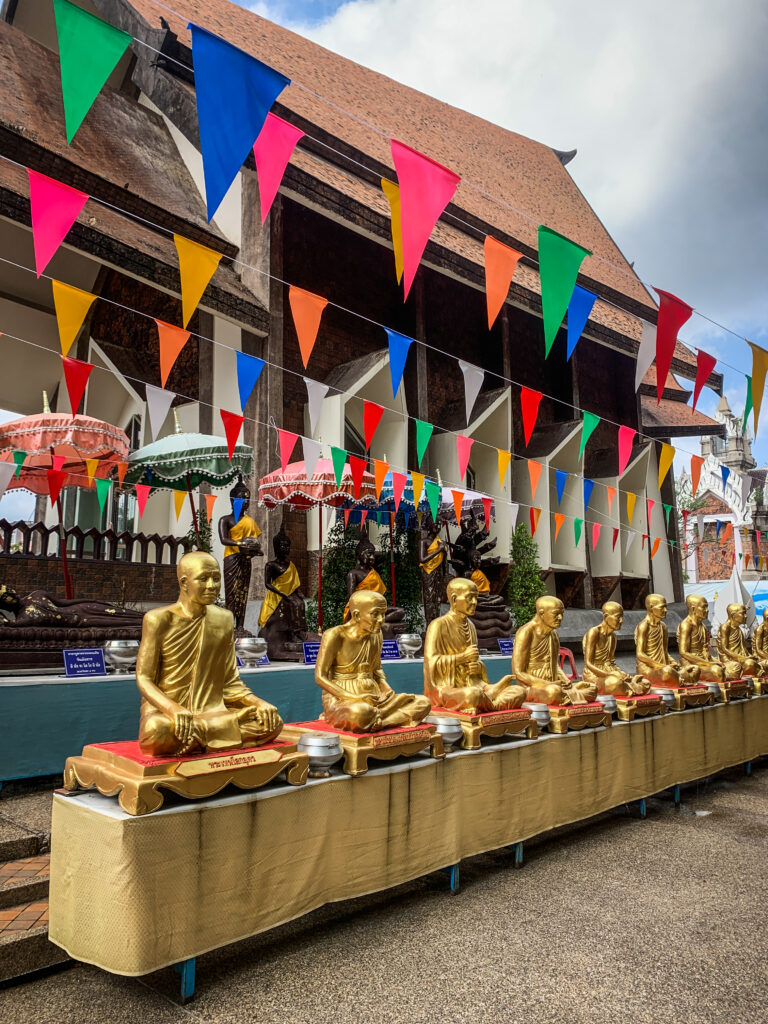


City gates
Nakhon Ratchasima has been the important gateway to the northeastern region since the Ayutthaya period, preventing Khmer invasions. Therefore, the city wall and gates were built. Chumphon Gate is the only original one still standing. The other ones: Phon Saen Gate, Phon Lan Gate, Chainarong Gate or Yamo Gate have been recently rebuilt.
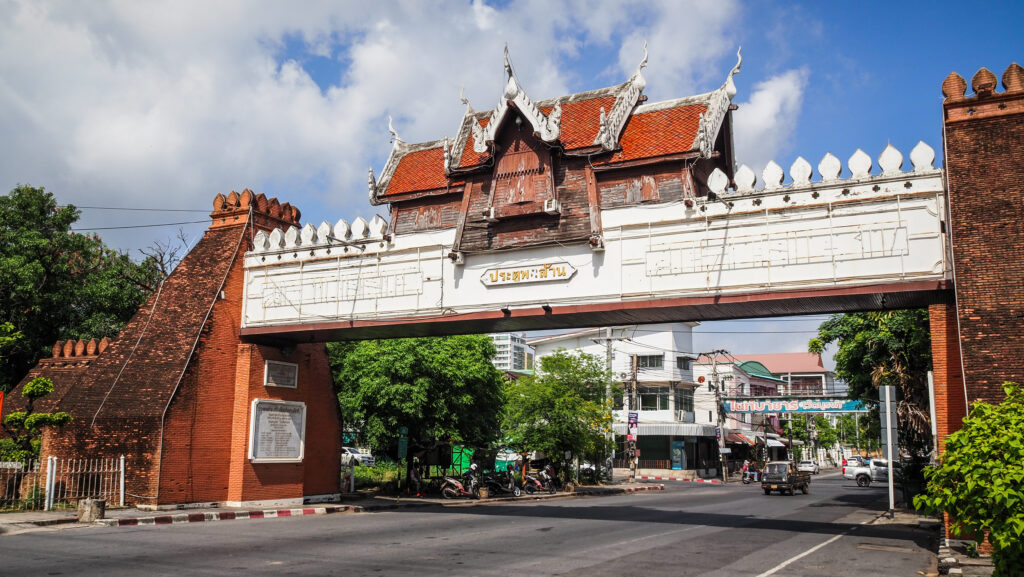
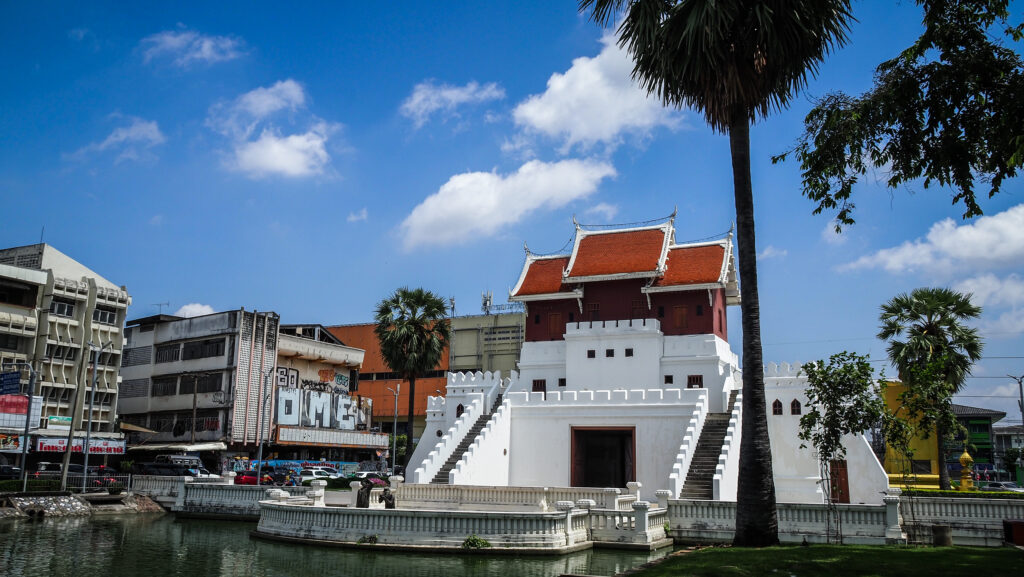
Wat Phayap
Definitely an extraordinary site with an interesting history. When the abbot of Wat Phayap learned that blasting for a quarry in Saraburi Province was destroying a beautiful cave, he decided to rescue some pieces of it and create a room full of stalactites, stalagmites and Buddha statues just next to his residence.
Thao Suranari (Ya Mo) Monument
A statue of Thao Suranari stands in the center of Nakhon Ratchasima and is a popular object of devotion. Lady Mo, also known as Ya Mo (Grandma Mo) was the wife of the deputy governor of Nakhon Ratchasima (Korat), the stronghold of Siamese control over its Laotian vassals.
In 1826, the King of Vientiane invaded Siam, seeking complete independence. His forces seized the city, and evacuated the inhabitants, intending to resettle them in Laos. This is when Lady Mo comes into the stage. She became a hero by organizing a successful prisoner revolt. There are several versions of the legend. One of them says that she convinced the women to seduce the Lao soldiers. According to another one, she simply got them drunk. One more says that she requested knives from the invaders so that food could be prepared and then she gave the knives to the imprisoned men. The result was, however, the same in all stories. Thai men launched a surprise attack, saving the city.
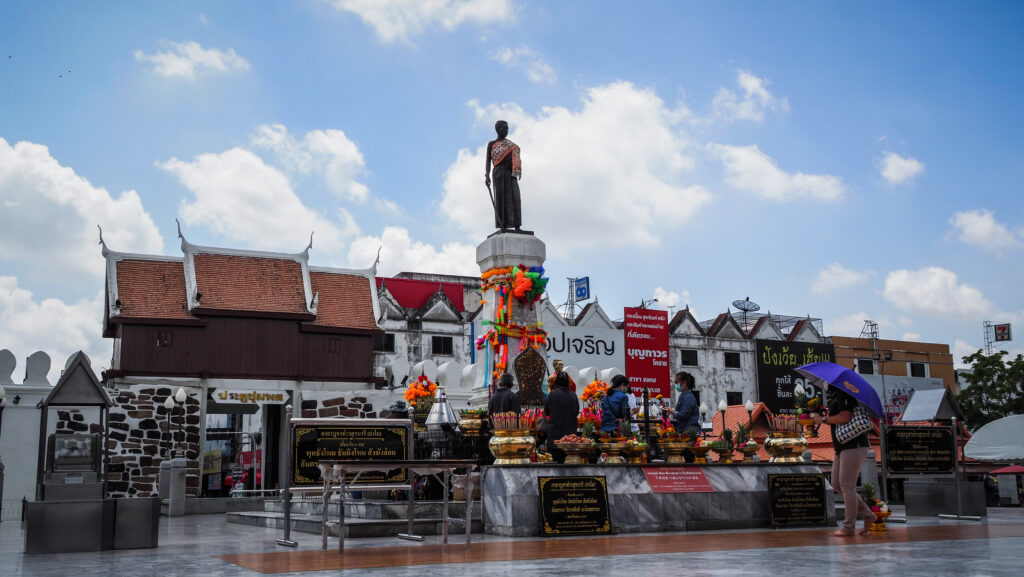

Maha Weerawong National Museum
A very small museum in a one-story building behind the library. There are interesting antiques to see but you will be done with sightseeing in half an hour.
Wat Pha Narai Maha Rat
The temple takes its name from the Vishnu statue which is housed in a shrine there. The statue is Khmer in origin and made of sandstone. There are three of these sandstone statues in the temple. It is nicely located on an island in the center of a small lake, but somehow the area seems to be neglected.


Wat Sa Kaeo
Small and calm temple next to an artificial pond alongside a road.
Art Gallery and Exhibition
A pair of two-story pavilions have a variety of art and exhibits of Thai kings. Located in a little park beside a section of moat. Most of the information is in the Thai language only. Free to enter.
City Pillar Shrine
More than the altar it is the large pottery wall telling the battle against Lao invaders (the one Thao Suranaree presumably led).

Around Nakhon Ratchasima
Prasat Hin Phanom Wan
A must-visit Khmer sanctuary, which is believed to be built in the 15th century and renovated during the 18th and 19th centuries. Initially dedicated to the Hindu religion but later became a Buddhist ritual site. The main pagoda and a tiered pagoda are still remaining and make the site incredibly beautiful and atmospheric. Not many tourists come here so you won’t find guides or shops. Just a peaceful place with ancient structures.

Prasat Non Ku
It is a small cluster constructed of bricks and sandstone. The plan is rectangular facing east. From the archaeological evidence, it is assumed that it used to be a Hindu religious building cluster in the ancient Khmer style in the 10th century.
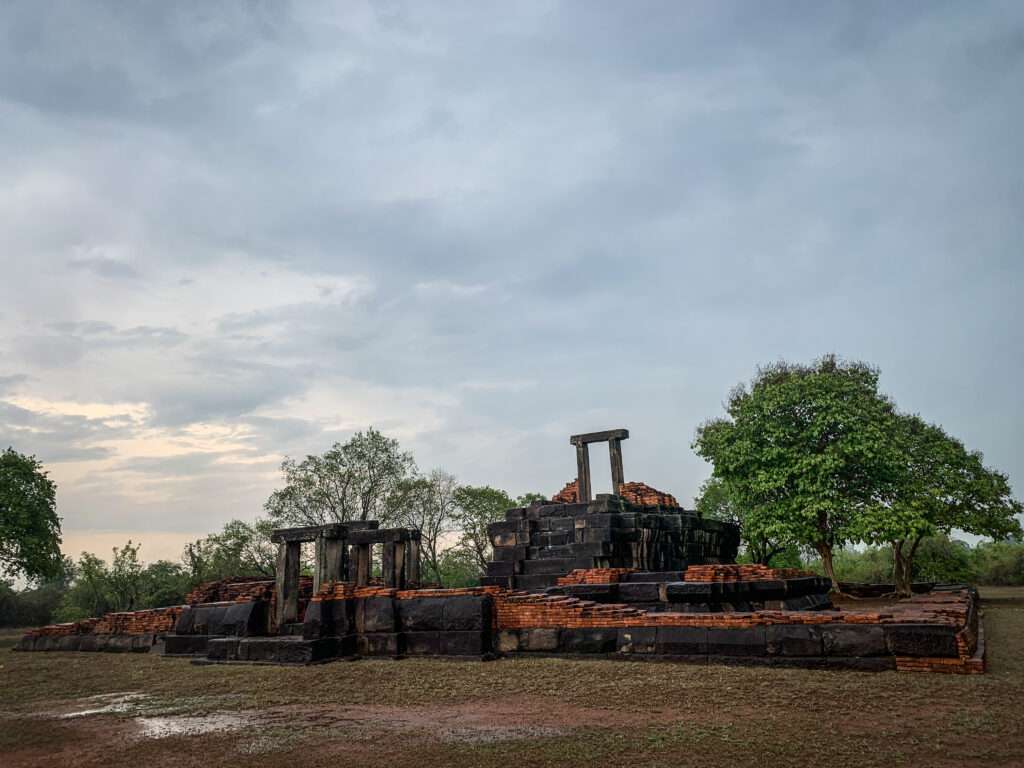
Prasat Muangkhaek
This large ancient ruin is 600 meters from Prasat Non Ku, made of bricks and sandstone with a rectangular plan facing towards the north. It is assumed that this building might have possibly been another Hindu shrine in this region. It was built around the 10th century.


Mueang Sema Historical Site
Mueang Sema is a large ancient city that was surrounded by an earthen moat and divided into outer city and inner city. The outer city was larger on the north side, where three ancient monuments were found. In the center of the city, a square moat or pond was dug. Monuments of the inner city are found at 6 sites. Some sites are religious centers of the Brahman religion, such as Prasat Prathan, constructed in Khmer style with bricks. Additionally, within the Muean Sema were found skeletons buried ritually in the prostrate position, wearing bronze rings, along with pottery, iron tools, and glass beads.
Mueang Sema has developed since the late prehistoric age around the 13th – 14th centuries Buddhist Era. During this period, under the influence of Dvaravati culture Buddhist religious sites were constructed. Later, around the 15th – 16th centuries of the Buddhist Era, the influence of Khmer culture brought about the appearance of Hindu buildings.
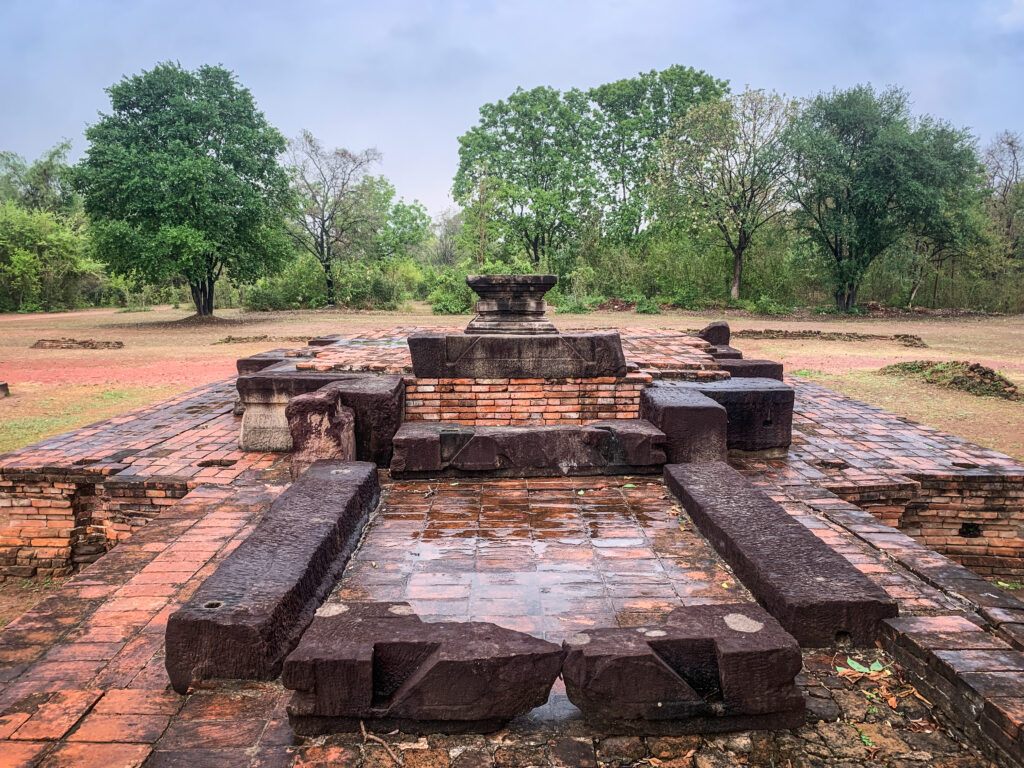
Wat Thammachak Semaram
This reclining Buddha image made of sandstone is the oldest and largest in Thailand. It was built approximately in the 15th-century Buddhist era about the same time as the ancient city of Mueang Sema. It is in the area just outside of the moat of Mueang Sema. The image is built from large blocks of red sandstone placed in layers and carved into the shape of a reclining Buddha oriented north to south. It has been hypothesized that this area was an important Buddhist religious center for the ancient Mueang Sema.

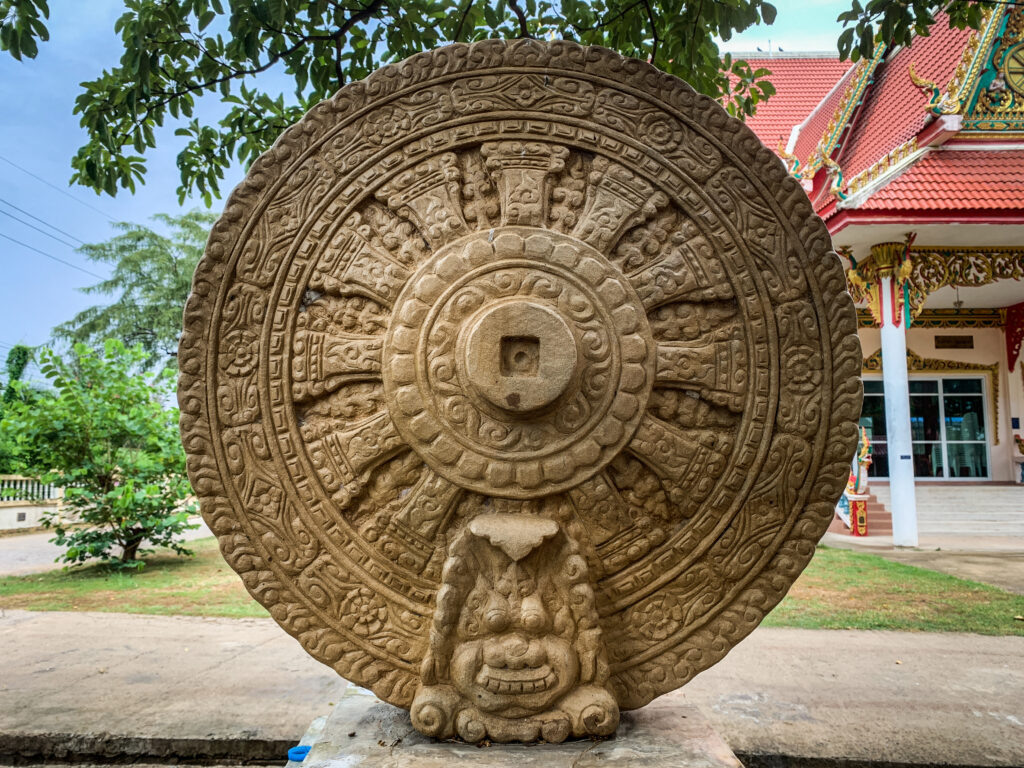
Wat Ban Rai and Luang Phor Koon Museum
Wat Ban Rai is one of the famous Temples in Nakhon Ratchasima. It required some effort to get there as it’s over one hour drive from the city center.
Originally, Wat Ban Rai was a small monastery, but then the monk Luang Pho Khun developed it into the big and well-known temple that we can see today. An interesting building on the grounds is definitely an elephant-liked ceramic shrine in the center of the water. On the rooftop are the statue of the walking Buddha and the statue of Luang Pho Khun. The Museum of Luang Pho Khun presents some more details about the life of a famous monk.
Phimai
It is a charming town famous for the 11th-century Khmer ruins of Phimai Historical Park. It’s one of Thailand’s most impressive and well-preserved archaeological sites. Long before it was a tourist attraction, the site served as an important religious and political hub for the Khmer Empire. Today, visitors to Phimai are treated to an incredible display of ancient architecture and intricate carvings, as well as a glimpse into the region’s rich cultural heritage. You can read more about it in a separate post HERE.
Jim Thompson Farm
Beautiful place to spend some time among flowers and relax. It only opens for a specific period during the year, which is usually around December. Check the info in advance on their Facebook to avoid disappointment.


